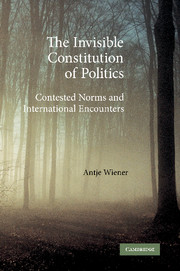Book contents
7 - Human rights and fundamental freedoms
Published online by Cambridge University Press: 22 September 2009
Summary
Covenants and contracts are not identical synonyms for the constitution. The former term carries more communitarian, the latter more functional connotations, but both imply that a constitution is an enactive document consummating the creation of a polity.
(Hart 2001: 154)Introduction
In the best-case scenario, a constitution is not only signed by a constitutional convention. It is also the outcome of an on-going process of deliberation among those affected by the rules within it. Following from the ideal of that best-case scenario of a constitution, embedded in and targeted by on-going dialogue, two functions of a constitution stand out. They oscillate between the assumption of a constitution's role as part of the political organisation of a community, on the one hand, and constitutional rules as the focal point of political deliberation within a community, on the other. In contrast to this theoretical ideal, questions of whether constitutions trigger the creation of a community based on a constitutional moment, and whether they enhance the perception of legitimacy in a polity are debated issues. The creation of a community and a perception of legitimacy remain to be established empirically on a case-by-case basis that takes the different time and shape of a polity into account.
While constitutions have both an organisational and a cultural dimension and hence involve two sets of practices, their organisational role can be identified according to expectations towards that role at different times. Three positions can be meaningfully distinguished.
- Type
- Chapter
- Information
- The Invisible Constitution of PoliticsContested Norms and International Encounters, pp. 151 - 180Publisher: Cambridge University PressPrint publication year: 2008

